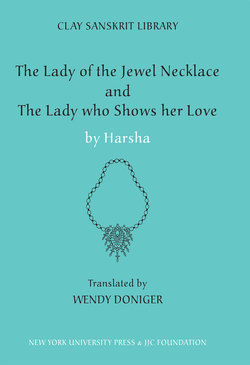Читать книгу The Lady of the Jewel Necklace & The Lady who Shows her Love - Harsha - Страница 42
На сайте Литреса книга снята с продажи.
Оглавлениеbut she carries the message that is crucial to the plot. Magic takes one form in one play, another form in another, as does portrait-painting. And, ultimately, they replace one another.
The first transformation (magical illusion) differs from the other three in several ways: the illusory form of the magician lies. It prevents rather than facilitates the union of the king and his mistress, and is ended, rather than created, by the suspension of rational thought. In all of the other variants, the illusory form tells the truth, brings about the ultimate union of the king and the mistress, and is created by the suspension of rational thought. The exception highlights, if it does not actually prove, the rule: one can dream by daylight, through masquerade and the theatre, and reach out to the same kind of emotional truth—often a painful truth—that we find in our dreams.
The play within a play (best known to us from ‘Hamlet’) is a popular device in Sanskrit literature, beginning long before these plays (in Valmiki’s ‘Ramayana’ (Ramayana), for instance; Doniger O’Flaherty 1984: 175) and continuing on into other plays (in Bhava·bhuti’s ‘Rama’s Last Act’ (Uttara/rama/carita), for instance; Doniger 2005: 66–7). Vasava·datta’s play in ‘The Lady who Shows her Love,’ or the magician’s magic illusion in ‘The Lady of the Jewel Necklace,’ is actually a play within a play within a play, since the level on which Vasava·datta exists is framed, Pirandello-fashion, by the traditional opening remarks of the stage-director, who tells us that we are going to see a play. Indeed, at the start of ‘The Lady of the Jewel Necklace’ the stage-director is joined by his wife, the actress, who ________
